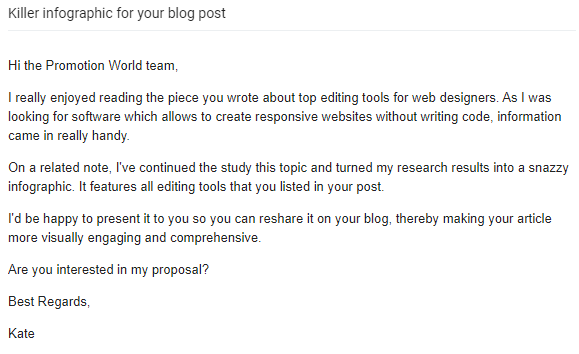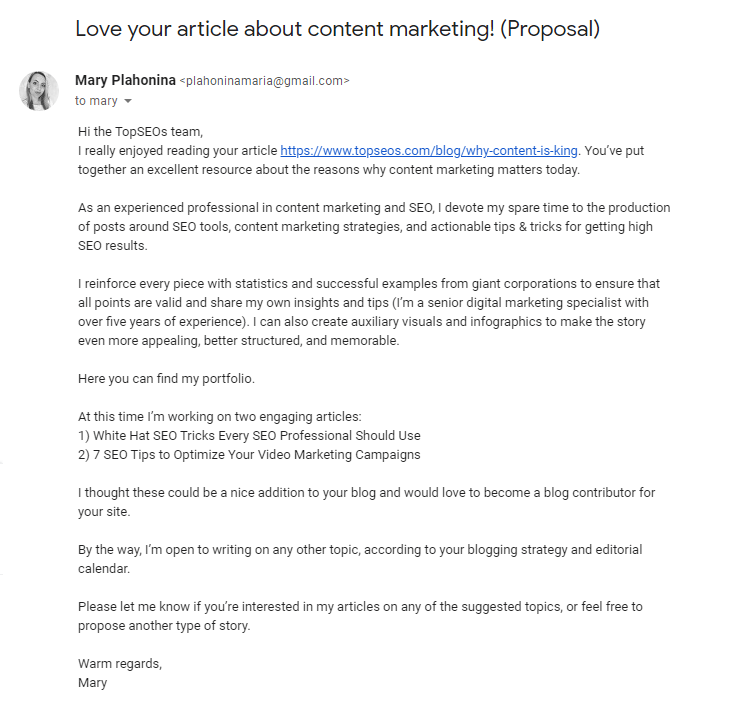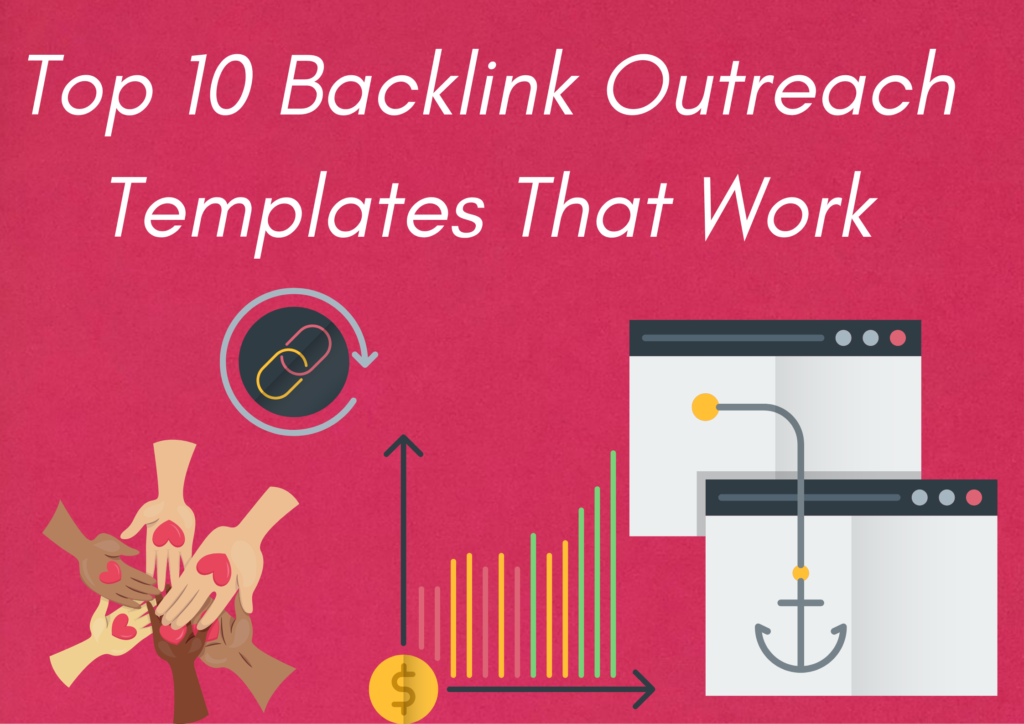Discover the secret to crafting backlink outreach emails that guarantee responses and skyrocket your website’s SEO success. Don’t miss out!

Image courtesy of via DALL-E 3
Table of Contents
- Introduction to Backlink Outreach
- Understanding Your Audience
- Crafting the Subject Line
- The Anatomy of a Good Backlink Outreach Email
- Do’s and Don’ts of Backlink Outreach Emails
- Following Up
- Tracking and Improving Your Outreach
- Best Tools for Backlink Outreach
- Summary
- Frequently Asked Questions (FAQs)
Introduction to Backlink Outreach
Welcome to the world of Backlink Outreach! In this section, we will explore the importance of backlinks, the role of outreach in obtaining them, and the goal of crafting effective emails to elicit positive responses.
What is Backlink Outreach?
Backlink Outreach is a fancy term for reaching out to other website owners to ask them to link back to your website. It’s like making new friends in the digital world and building connections that benefit both parties.
Why Are Backlinks Important?
Backlinks are like votes of confidence for your website. When other sites link to yours, search engines see it as a sign of credibility and authority, which can improve your website’s ranking and bring in more visitors.
The Goal of a Good Email Template
The ultimate aim of crafting an effective email template is to build relationships with other website owners and earn valuable backlinks. A well-crafted email can make a positive impression, leading to a successful collaboration.
Understanding Your Audience
In order to craft effective backlink outreach emails, it’s crucial to understand who you’re reaching out to. Tailoring your message to your target audience can greatly increase the chances of getting a positive response. Let’s dive into how you can identify and personalize your emails to make them more engaging.
Finding Your Target Audience
When it comes to backlink outreach, your target audience consists of individuals or organizations who have the potential to link back to your website. This could include bloggers, website owners, or influencers in your niche. By identifying the right people to contact, you can focus your efforts on those most likely to respond.
Researching Your Audience
Research is key to understanding your audience’s interests and preferences. Tools like Google search can help you gather information about their websites, topics they cover, and the type of content they engage with. By taking the time to research your audience, you can tailor your message to resonate with them.
Personalizing Your Email
Personalization is an essential component of effective outreach emails. Adding personal touches like addressing the recipient by name can make your message more appealing and show that you’ve done your homework. By customizing your emails to each individual, you demonstrate a genuine interest in building a connection.
Crafting the Subject Line
When it comes to crafting an effective backlink outreach email, one of the most crucial elements is the subject line. This short line of text plays a vital role in grabbing the recipient’s attention and increasing the likelihood of your email being opened. Let’s dive into why the subject line matters and how you can craft one that gets noticed.

Image courtesy of kaiserthesage.com via Google Images
Why the Subject Line Matters
The subject line of your email is like the cover of a book – it’s the first thing people see, and it can determine whether they decide to open and read your message. A compelling subject line can intrigue the recipient and make them curious to learn more about what you have to say. On the other hand, a bland or vague subject line may cause your email to be overlooked or sent straight to the spam folder.
Good subject lines are clear, concise, and relevant to the recipient. They should give a hint of what the email is about and spark interest without giving away too much. For example, a subject line like “Quick question about your amazing content” is more likely to pique curiosity than a generic one-word subject like “Hello.”
Examples of Good Subject Lines
Here are some examples of effective subject lines that are easy to understand and engaging:
- “Love your [specific blog post] – let’s collaborate!”
- “Quick request for a backlink to enhance your site”
- “Boost your SEO with a valuable backlink opportunity”
These subject lines are personalized, mention a benefit to the recipient, and clearly communicate the purpose of the email, making them more likely to grab attention and prompt the reader to open the email.
Tips for Writing Subject Lines
When crafting your subject line, remember to keep it short and to the point. Aim to communicate the essence of your email in a few words, focusing on what’s in it for the recipient. You can also try using the recipient’s name or referencing something specific about their website to show that your email is tailored to them.
Another tip is to avoid using all caps or excessive punctuation marks, as these can make your subject line look spammy. Instead, opt for a friendly, conversational tone that encourages the recipient to open the email and engage with your message.
The Anatomy of a Good Backlink Outreach Email
When crafting a backlink outreach email, the opening greeting sets the tone for your message. Start with a friendly salutation, and don’t forget to personalize by using the recipient’s name. This simple touch can make a big difference in building a connection right from the start.
Introduction
After the greeting, introduce yourself and your website briefly. Keep it positive and focus on what makes your site unique and interesting. Remember, you want to capture the recipient’s attention and make them curious about what you have to offer.
The Value Proposition
Next, clearly explain the benefits of linking to your site. Help the recipient understand why having a backlink to your website is valuable for them. Whether it’s to enhance their content, provide additional resources, or improve their SEO, make the value proposition clear and compelling.
Including a Call to Action
Every effective email includes a clear call to action. Politely but directly ask for the backlink, making it easy for the recipient to understand what you’re requesting. Whether it’s a specific link placement or a simple mention, guide them on how to proceed.
Closing
To wrap up your email, thank the recipient for considering your request and include a polite sign-off. Don’t forget to provide your contact details in case they need to reach out to you. Ending on a courteous note leaves a positive impression, even if they decide not to backlink immediately.
Do’s and Don’ts of Backlink Outreach Emails
When crafting backlink outreach emails, there are certain best practices that can increase your chances of success:

Image courtesy of reverbico.com via Google Images
1. Keep your email short and to the point to respect the recipient’s time.
2. Be polite and respectful in your language and tone to create a positive impression.
3. Personalize your email by addressing the recipient by their name and mentioning specific details about their website.
4. Clearly explain the value proposition, highlighting the benefits of linking to your website.
5. Include a clear and direct call to action, making it easy for the recipient to take the desired action.
6. Follow up politely if you don’t get a response after a reasonable time period.
Don’ts
It’s essential to avoid common mistakes that can hinder the effectiveness of your backlink outreach emails:
1. Don’t send generic, one-size-fits-all emails that lack personalization and specificity.
2. Avoid being too pushy or aggressive in your tone, as it can turn off potential linkers.
3. Don’t forget to proofread your email for errors in spelling, grammar, and formatting.
4. Avoid bombarding the recipient with multiple follow-up emails in a short span of time.
5. Don’t forget to respect the recipient’s decision if they decline your request for a backlink.
Following Up
After sending out your initial outreach emails, it’s essential to follow up if you don’t get a response. Following up shows persistence and can increase your chances of getting a reply. Here are some tips on when to follow up, how to write a follow-up email, and what to do if there’s still no response:
When to Follow Up
It’s best to wait a reasonable amount of time before sending a follow-up email. A good rule of thumb is to wait about a week after your initial email. This gives the recipient time to read your message and respond.
How to Write a Follow-Up Email
When writing a follow-up email, keep it brief and polite. Remind the recipient of your previous message and gently ask if they had a chance to consider your request. Be friendly and appreciative of their time.
What If There’s Still No Response?
If after following up you still don’t receive a reply, it’s okay to move on to another potential contact. Not everyone will respond to your outreach emails, so don’t take it personally. Keep trying with new contacts and continue to refine your approach.
Tracking and Improving Your Outreach
When you’re reaching out to other website owners for backlinks, it’s important to track your efforts and see how you can improve over time. By analyzing your outreach performance, you can identify what works best and make adjustments to increase your success rate.

Image courtesy of reverbico.com via Google Images
How to Track Responses
To keep track of your outreach responses, you can create a simple spreadsheet or use a tracking tool. In your tracking document, note down who has responded positively, who hasn’t replied, and any follow-up actions you need to take. This way, you can stay organized and monitor your progress.
Analyzing Your Success
After sending out your outreach emails, take the time to evaluate which ones generated the most responses. Look for patterns in the emails that worked well, such as the subject lines, content, or call to action. By understanding what resonates with your audience, you can tailor future emails for better results.
Making Improvements
Based on your tracking data and analysis, make improvements to your outreach strategy. Tweak your email templates, subject lines, or call to action based on what has been most effective. By continuously refining your approach, you can increase your chances of getting positive responses and building valuable backlinks.
Best Tools for Backlink Outreach
When it comes to backlink outreach, having the right tools can make a significant difference in your productivity and success. Here are some of the best tools to help you streamline your outreach efforts:
Email Marketing Tools
Email marketing tools are essential for sending and tracking your outreach emails. These tools help you create professional-looking emails, manage your contact lists, and track the performance of your campaigns. Some popular email marketing tools include:
- Mailchimp: A user-friendly platform that allows you to design and send emails, as well as track open rates and click-through rates.
- Constant Contact: Another popular tool for email marketing, which offers customizable templates and analytics to measure the success of your campaigns.
With these tools, you can easily reach out to potential backlink partners and monitor the effectiveness of your emails.
SEO Tools
SEO tools can help you identify websites that are relevant to your niche and have good authority for potential backlink opportunities. These tools provide insights into keywords, backlink profiles, and competitive analysis. Some useful SEO tools for backlink outreach include:
- Ahrefs: A comprehensive SEO tool that offers backlink analysis, keyword research, and competitor analysis to help you find high-quality backlink prospects.
- Moz Pro: Another reliable tool that provides backlink data, keyword research, and site audits to improve your overall SEO strategy.
By utilizing these SEO tools, you can identify the most valuable backlink opportunities and tailor your outreach efforts for better results.
Link Tracking Tools
Once you’ve secured backlinks, it’s important to track their performance to understand which links are driving traffic and improving your site’s SEO. Link tracking tools help you monitor the impact of your backlinks and identify areas for improvement. Some effective link tracking tools include:
- Google Analytics: A free tool by Google that provides in-depth analytics on your website traffic, including where visitors are coming from and which pages are performing well.
- SEMrush: An all-in-one marketing toolkit that includes link tracking features to monitor the effectiveness of your backlinks and overall SEO performance.
By using these link tracking tools, you can measure the success of your backlink outreach efforts and make data-driven decisions to improve your strategy.
Summary
Now that we’ve covered a lot of ground on crafting effective backlink outreach emails, let’s recap the key points to remember.

Image courtesy of www.writecream.com via Google Images
Recap of Key Steps
We started by understanding what backlink outreach is, why backlinks are important, and the goal of creating engaging emails that encourage responses. We then discussed the importance of knowing your audience, researching them, and personalizing your emails for better engagement. Crafting a compelling subject line was highlighted as a key step to increase email open rates. We also outlined the essential components of a good backlink outreach email, including the opening greeting, introduction, value proposition, call to action, and closing. We learned about best practices and common mistakes to avoid when sending outreach emails, the importance of following up, and how to track and improve our outreach efforts over time.
Final Tips and Encouragement
Remember, practice makes perfect when it comes to backlink outreach. Don’t get discouraged if you don’t get immediate responses. Keep honing your email skills, following the tips we’ve outlined, and you’ll see improvements over time. Start reaching out to potential backlink partners with confidence, and don’t be afraid to tweak your approach based on the responses you receive. Good luck!
Want to turn these SEO insights into real results? Seorocket is an all-in-one AI SEO solution that uses the power of AI to analyze your competition and craft high-ranking content.
Seorocket offers a suite of powerful tools, including a Keyword Researcher to find the most profitable keywords, an AI Writer to generate unique and Google-friendly content, and an Automatic Publisher to schedule and publish your content directly to your website. Plus, you’ll get real-time performance tracking so you can see exactly what’s working and make adjustments as needed.
Stop just reading about SEO – take action with Seorocket and skyrocket your search rankings today. Sign up for a free trial and see the difference Seorocket can make for your website!
Frequently Asked Questions (FAQs)
What is a Backlink?
A backlink is a link from one website to another. In simple terms, it’s like a digital referral that tells search engines your site is trustworthy and reputable. Backlinks play a crucial role in SEO by improving your website’s visibility and ranking in search results. The more quality backlinks you have, the better your site’s chances of attracting organic traffic.
Why Aren’t My Emails Getting Responses?
If your outreach emails aren’t getting responses, there could be a few reasons. One common issue is that your emails may not be personalized enough, making them feel generic and unengaging. To improve your response rate, try to tailor your emails to each recipient by mentioning specific details about their website or interests. Additionally, make sure your subject line is attention-grabbing, your email is concise and clear, and your call to action is compelling.
How Many Emails Should I Send?
When it comes to backlink outreach, quality is more important than quantity. Instead of sending a large volume of emails, focus on identifying high-quality prospects who are relevant to your niche or industry. It’s recommended to start with a manageable number of emails, maybe around 10-20 per week, to ensure you can personalize each message effectively. As for follow-ups, sending a polite reminder after a week or two can be a good practice, but avoid overwhelming recipients with too many messages.







